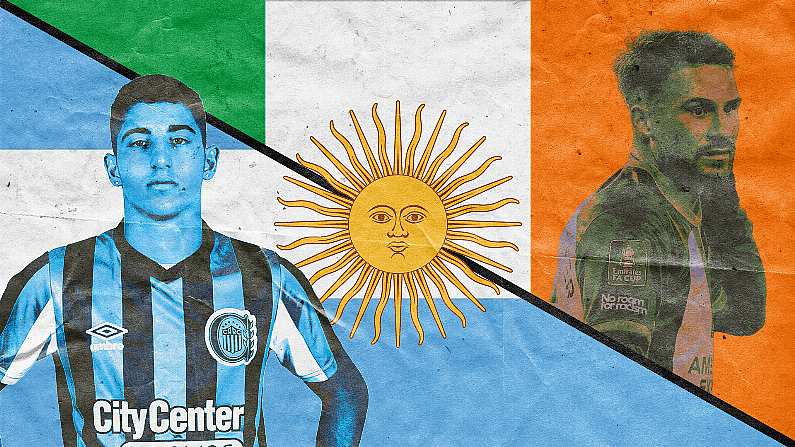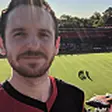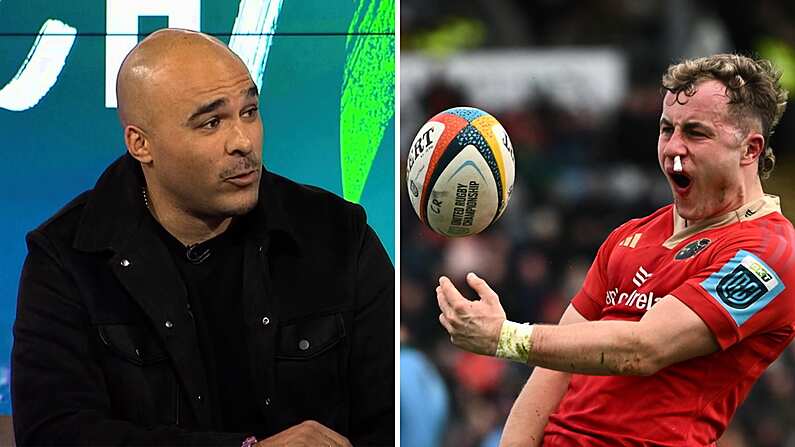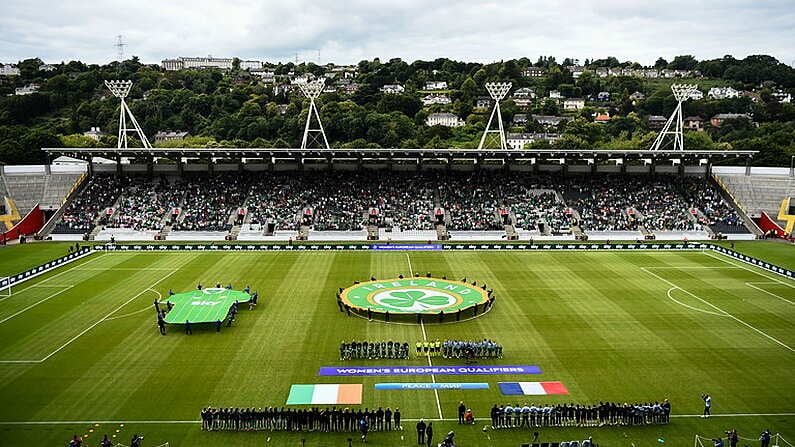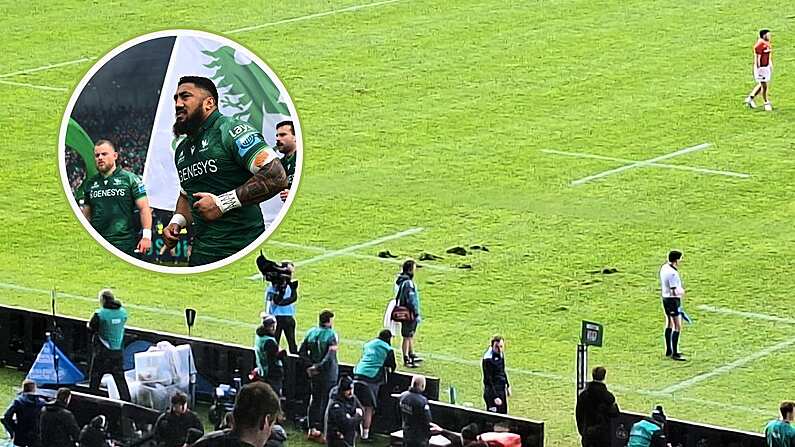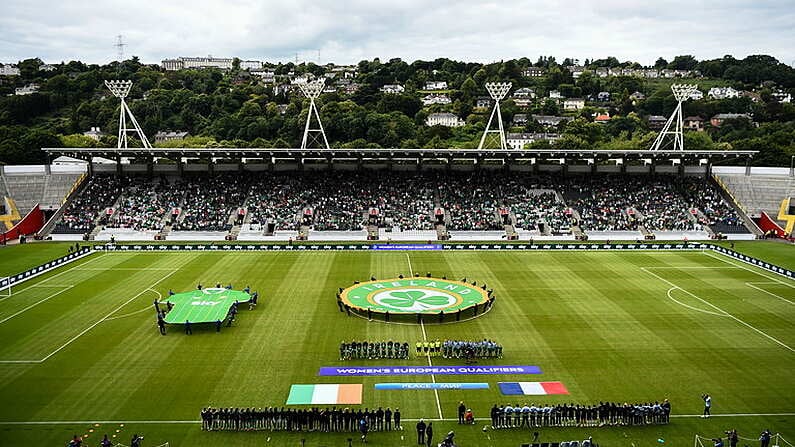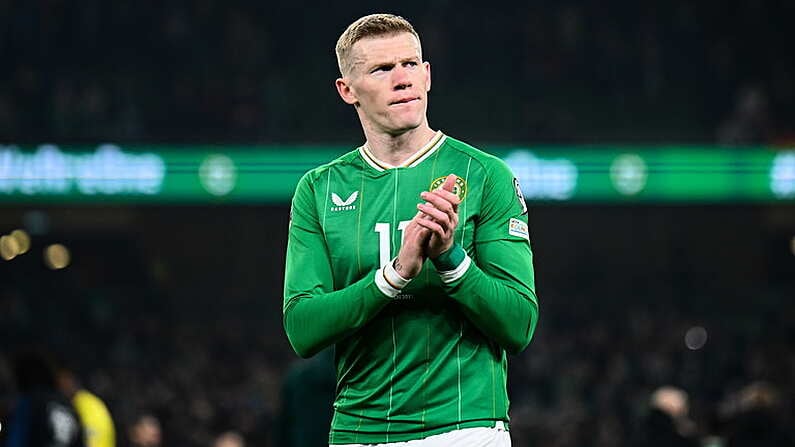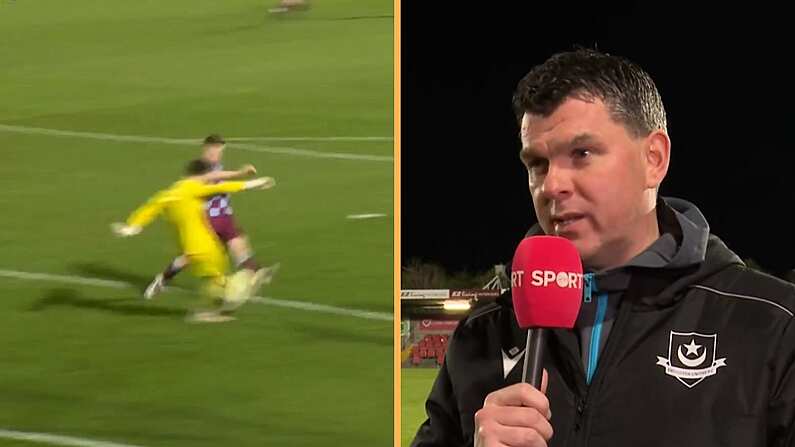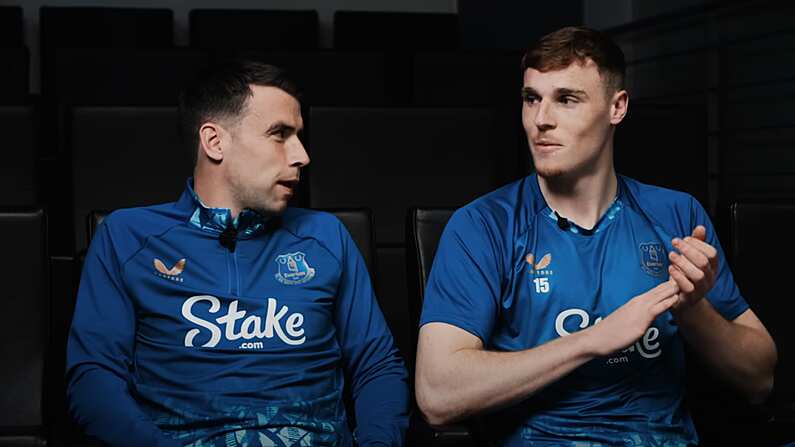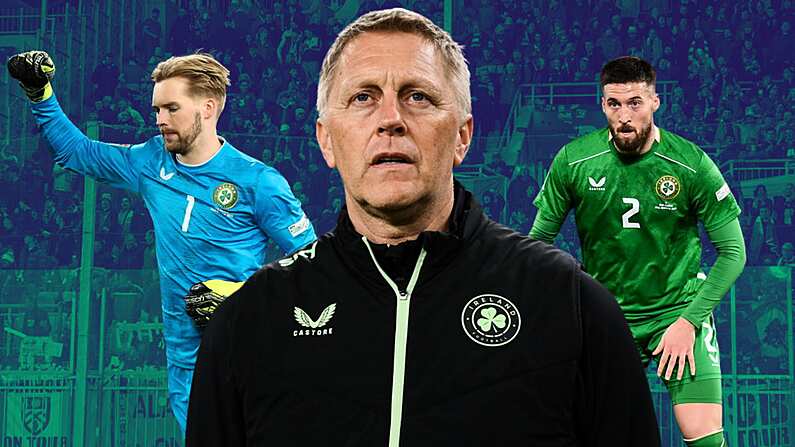Enjoying their strongest campaign in recent years in Argentina’s Primera División, Rosario Central registered their biggest win of the season on Sunday, thrashing Buenos Aires club Platense 4-0 at home.
When hotly-tipped young forward Alejo Véliz added a third goal for Los Canallas after 66 minutes, manager Miguel Ángel Russo decided it was time to give some of his senior starters a rest with the victory looking likely. The numbers went up; a double substitution. Quintana and Giaccone coming off, Agüero and O’Connor coming on. Facundo Agüero, no relation to Sergio, has barely played for Central this season while 19-year-old Tomás O’Connor was making his professional debut for the hometown club he has supported since he was a child.
33' ST Cambio en el Canalla pic.twitter.com/khDB80CFBb
— Rosario Central (@RosarioCentral) May 7, 2023
O’Connor joined Central from amateur Rosario youth team ADIUR, a feeder club for the Spanish side Villarreal. His debut was a long-deserved moment for a player who has recently been captain of the club’s reserve team, a talented box-to-box midfielder who was called up in 2022 by Javier Mascherano to represent Argentina U20s.
To Irish observers of South American football like myself, however, the first question that always comes to mind when a player with an Irish surname appears is of course: is he eligible for us?
The Irish in Argentina
Like World Cup winner Alexis Mac Allister (whose brother Francis is a teammate of Tomás O’Connor’s at Rosario Central), O’Connor is one of an estimated 500,000 to 1,000,000 Argentinians of Irish descent. Argentina is home to the 5th largest Irish diaspora in the world and the largest cohort of Irish descendants from a non-English speaking country. Emigration to Argentina from Ireland was largely concentrated in the hundred years between 1830 and 1930 with emigrants arriving to escape poverty and The Great Famine.
Percy Flaherty, a former director of marketing and communications at Rosario Central’s great city rivals Newell’s Old Boys, recounts that his ancestors arrived in Patagonia from Galway in the 1850s having been fooled into thinking they were boarding a boat bound for New York. The Flahertys eventually made their way by land 1500 km north to Rosario, Argentina’s third biggest city, where the family still remains five generations on. Over 170 years have passed since they arrived in Argentina but Percy and his brothers share pictures with each other on WhatsApp of Aughnanure Castle in Oughterard, built by the O’Flaherty clan in the 16th century - a reminder of where the family originated.
O’Connor, like Percy Flaherty and Brighton’s Mac Allister, is likely to be descended from the same generation of Irish emigrants that arrived in the 19th century, making him at least 2 or 3 generations removed from eligibility for Stephen Kenny’s Republic of Ireland. Eligibility rules are looser for other nations who have large diasporas in Argentina. In March, Tigre’s Mateo Retegui, the current top scorer in Argentina’s top division, netted on his debut for Italy against England in the UEFA European Championship Qualifiers. Born in Buenos Aires, he qualifies for Italy as the great-grandson of an Italian.
Like Retegui for Italy, Tomás O’Connor’s debut ended with him on the scoresheet. 11 minutes after entering the field of play, he found himself at the edge of the six-yard box as Central looked to finish the game in style. With Platense’s defenders scrambling to get back, , the ball was crossed from the left to the back post and headed back across the goalmouth by Jhonatan Candia. O’Connor was in the perfect position to try another header. He wheeled away in shock to celebrate with his teammates and revel in an unforgettable moment.
18-year-old Tomás O'Connor scored his first professional goal for Argentinian side Rosario Central last night.
The next Alexis Mac Allister! Sign him up, Steo! 🇦🇷🇮🇪pic.twitter.com/IrdQ3p8UoR— Balls.ie (@ballsdotie) May 8, 2023
⚽️ O'Connor 🤝 O'Connor 🎸 pic.twitter.com/9js9ruEkcW
— Rosario Central (@RosarioCentral) May 8, 2023
A village called Murphy and a village called Cavanagh
O’Connor is not the only Irish descendant playing in the Argentina Primera División but his debut goal makes him one of the most prominent active players at the current time, along with Vélez Sarsfield’s Tomás Cavanagh and young 16-year-old San Lorenzo centre-back Thiago Dowd, yet to make his professional debut but a member of Pablo Aimar’s Argentina U17s.
Left-sided defender Cavanagh is three years O’Connor’s senior at 22 and also grew up in the province of Santa Fe. He came through the youth system at the Buenos Aires club named in honour of lawyer and politician Dalmacio Vélez Sarsfield, himself a descendant of Irish emigrants to Argentina and a cousin of the Earl of Lucan, Patrick Sarsfield. Cavanagh is now on-loan at Córdoba club Talleres after making his debut for Vélez in 2020 under ex-Southampton coach, Mauricio Pellegrino. His hometown of Amenábar is about 3 hours away from O’Connor’s hometown of Rosario but is a neighbouring town to the village of Murphy, named after Wexford farmer John James Murphy and famously the birthplace of another ex-Southampton coach, Mauricio Pochettino and former Tottenham and Southampton goalkeeper, Paulo Gazzaniga.
Cavanagh also traces his roots to John James Murphy’s county of Wexford. His grandfather Patricio Cavanagh, now 80-years-old, remembers his grandfather Ricardo (Tomás Kavanagh’s great-great-grandfather) being the youngest of the 10 sons of John Cavanagh and Rosa Mulligan who arrived in Argentina from Wexford in the aftermath of the Great Famine.
Speaking to me this week from his home in Amenábar, Patricio produced Ricardo’s original birth certificate from 1875 amongst a box of old family papers and documents he has kept. His memories of his grandfather are vivid.
“The family arrived in the city of Arrecifes (Province of Buenos Aires) first. Unfortunately I think John Cavanagh, or Juan as he became known here, died when my grandfather was only 9 years old. That was very hard on the family and all the kids ended up being raised apart by other people after John died. My grandfather was brought up by a local clerk in the city of Venado Tuerto which is only 50 minutes from where we all live now and where young Tomás was raised, so we’ve been in the same place for a long time”.
Venado Tuerto, a city smaller than the size of Galway, is interestingly the birthplace of another famous Wexfordman, singer Chris de Burgh, whose father was stationed there as a diplomat in the 1940s. Tomás' father Bernardo adds that Cavanagh is a well-known name in that part of Santa Fe and not just as a surname.
“There is a village called Cavanagh about an hour from here, over the border in Córdoba. It was founded in 1811 and has a population of about 1,200”. Neither Bernardo or Vélez Sarsfield’s Tómas have been to Ireland but his aunt visited the country in the past. “She told me that she saw the names Cavanagh and Kavanagh everywhere!” says Bernardo.
An Argentine Burke in Qatar
Bautista Burke is from Firmat, Santa Fe, about 30 minutes north of Murphy on the way to Rosario. The 20-year-old goalkeeper was on the books at Lionel Messi’s first club Newell’s before deciding to move to Qatari second division side Al-Shahania in search of regular first-team football. He was recently the hero in Al-Shahania’s shock run to the semi-finals of Qatar’s Amir Cup, saving penalties in both of their victories in the Round of 16 and Quarter-Finals before they were knocked out in the semi-final by the country’s most successful club Al-Sadd, helped in part by two goals from Santi Cazorla. Burke, like Percy Flaherty, likely traces his roots back to the West of Ireland.
The hero of yesterday’s match was 20-year-old Argentine goalkeeper Bautista Burke, who joined Al-Shahania last season from Newell’s Old Boys. He stopped three penalty kicks and made a couple of good saves during the match pic.twitter.com/pyp29iqKS7
— Mohamed El Gharbawy (@Gharbawy) April 10, 2023
Santa Fe’s largest city Rosario has links to the West of Ireland that precede the Famine period. Patrick Lynch arrived in Argentina from Galway in the 1700s and his great-great-great-great-
Fabián Costello: An Irish-Argentine footballer who came home
Before the internet made leagues like Argentina’s Primera División accessible to fans in Europe, Irish names appeared in South American competitions like the Copa Libertadores. Little was known here about the backgrounds of players such as the late Fabián O’Neill of Juventus and Uruguay, or Fabián Costello, another Rosario native who played for Newell’s Old Boys and later, Peñarol, the great rivals of O’Neill’s first club Nacional, but who was long been living in Ireland.
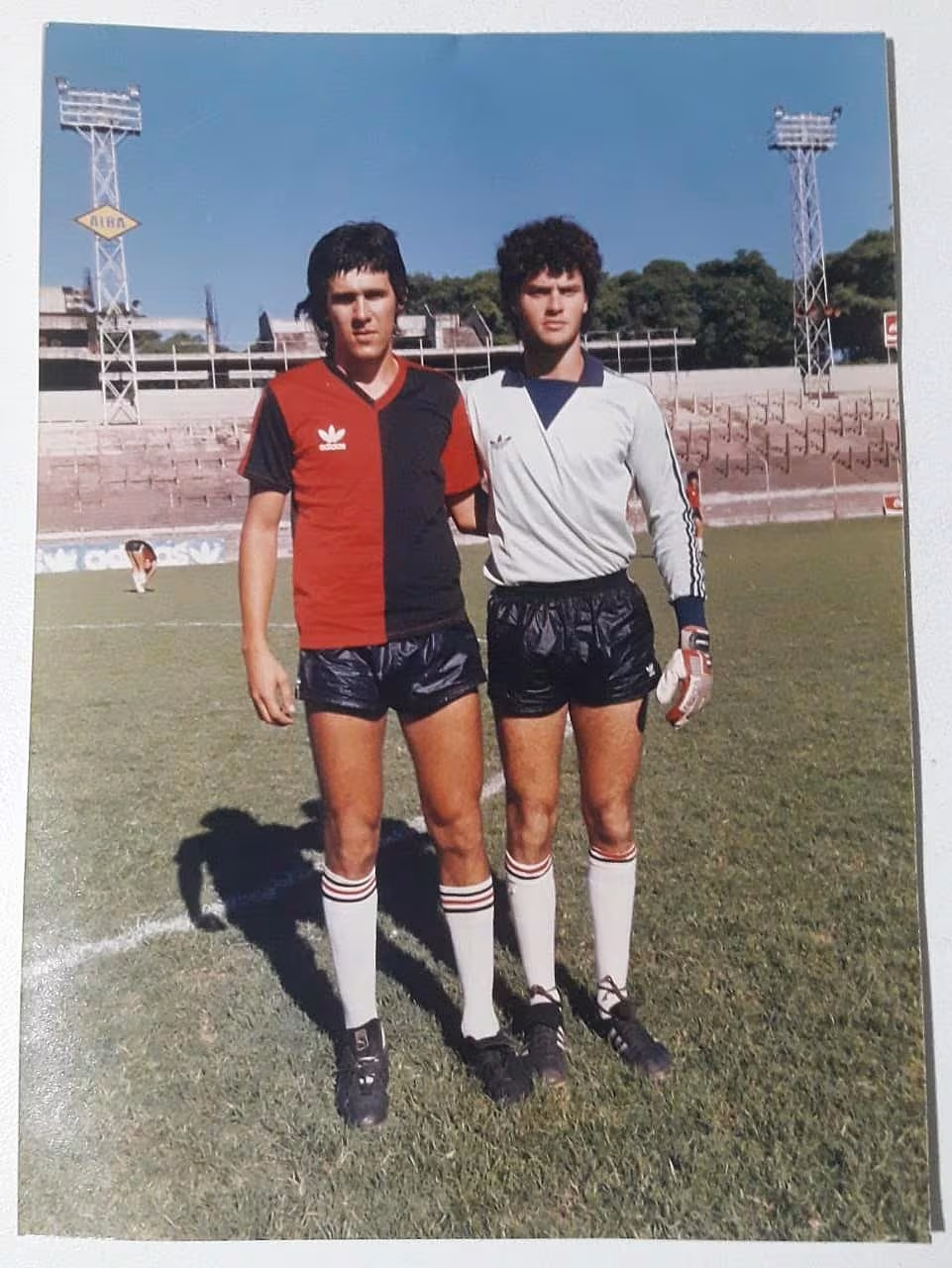
Fabián Costello with Jorge Spallanzani, at Newell's Old Boys' home stadium El Coloso del Parque (now known as the Estadio Marcelo Bielsa).
Costello, whose ancestor Miles Costello left Leitrim for Argentina in 1845, came through the famous Newell’s academy in the 1980s and was trained at under-15 level by former Leeds United manager Marcelo Bielsa. Bielsa would go on to become the most successful manager in the history of Newell’s, while Costello never made the first team, moving to Uruguay in his early 20s where he was a member of Peñarol’s Libertadores-winning squad of 1987. He retired early, becoming an engineer back in his hometown of Rosario where he was deeply entrenched in the city’s Irish community and a leading volunteer in the Asociación Católica San Patricio (St Patrick’s Catholic Association), a religious organisation which dedicates itself to promoting Irish culture. With Argentina’s notoriously fragile economy weakening in the early 2000s, Costello moved his family back to his ancestral homeland. They first settled in Carlow, before returning to Argentina for a few years when the recession hit. As that period abated, the Costellos moved back to Ireland again, initially to Newmarket, Co Cork before settling in South Dublin where Fabián still lives today with his wife and two sons.
He believes that Irish-Argentines were less likely to play football in the years following mass emigration as the Irish became wealthy farmers and landowners in Argentina whereas football was embraced by the working classes, especially rail workers. These traditions have been broken over the last few decades and football, especially in Rosario where both Maradona and Messi played, is a religion for almost everyone.
“All of us with Irish roots meet up to go to church on Sunday and then afterwards we all split in half to go and watch either my team, Newell’s Old Boys, or Rosario Central, who Tomás O’Connor plays for, depending on who you follow” says Costello.
While his roots were traced to Leitrim with the help of his Kerry-based cousin Mike Costello, Fabián reckons a lot of Irish descendants in Rosario trace their ancestral families to Meath and Westmeath.
“My family is an exception as we came in 1845 but many of the other families I know in Rosario arrived in the second wave of emigration in the 1880s. From that wave, who came from mainly Meath and Westmeath, there are Sullivans, O’Connors, Sinnotts, Donnellys, Mahons, Caseys and Lynches”.
A club with Mayo connections in the Primera?
While players with Irish names continue to be visible in Argentine football, we’re not that far away from having a club with deep connections to the Emerald Isle playing in the top division, as long as they have better luck than William Brown’s home county of Mayo. Almirante Brown, the Buenos Aires club named after the Foxford-born Admiral who became the father of the Argentine navy, went very close to promotion last season and are currently 4th in the Primera Nacional, Argentina’s second division. The club recently wore a strip with William Brown’s image on it which featured both the flags of Ireland and Argentina intertwined on the back.
One of my fave Argentine jerseys. A tribute to admiral William Browne, the Irishman considered the father of the Argentine navy, and an important figure in the wars of independence.
(Team:Almirante Brown - GK jersey)
(Yes I look distraught, I'm ginger and it's 32 degrees.) pic.twitter.com/XjpcH7gkDY— James Rolland (@jaysebro) January 24, 2023
While Boca Juniors were part-founded by Tipperary man Paddy McCarthy and their rivals River Plate recently had a new pitch installed by a Sligo company called SIS Pitches, Almirante Brown ascending to the Primera would be the most visible representation of Ireland in Argentine football.
In the meantime, players like O’Connor and Cavanagh are already playing in the league where Alexis Mac Allister was playing as recently as 2020. His quick ascent from Argentinos Juniors midfielder to Premier League-regular to World Cup-winner piqued Irish interests in his family history and his lineage was eventually traced to Donabate, Co. Dublin during Argentina’s path to victory in Qatar. His mercurial rise has shown not just those of Irish descent like O’Connor, but all of the young players coming through at Argentine clubs that glory sometimes isn’t as far away as it seems.
With names like O’Connor, Cavanagh and Burke all hungry to follow in the footsteps of Mac Allister, a fresh search for their Irish cousins may not be out of the question if they make it to the high levels of world football.
—-
Jamie Ralph is the founder of Newell’s Carajo, an English-language fansite for the Argentine club Newell’s Old Boys. He also runs the Newell’s Old Boys - English account on Twitter and has been featured as a pundit on Argentine football for the BBC and The Athletic.

